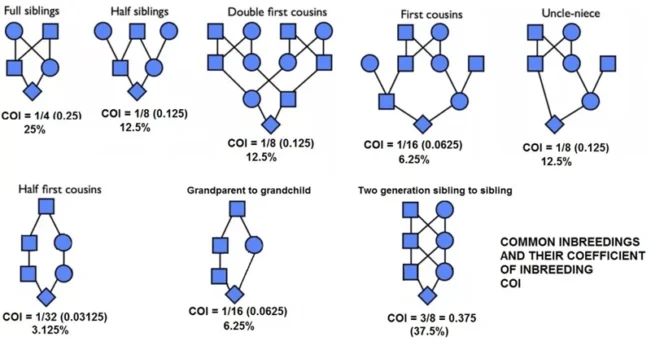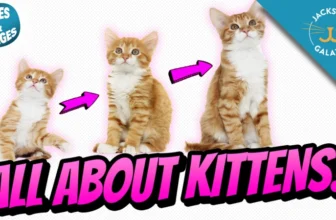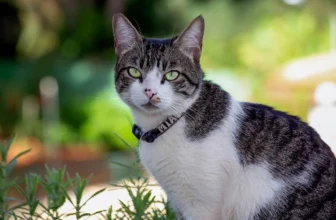It’s no secret that when it comes to breeding cats, the topic of inbreeding and outbreeding can be a rather controversial one. While both practices have their advantages and disadvantages, choosing the right approach can be a challenging task. In this article, we will take a closer look at the pros and cons of inbreeding and outbreeding in regards to American Wirehair breeding. We’ll explore the benefits and drawbacks of each approach and weigh the trade-offs in terms of the long-term health, physical appearance, and temperament of the offspring. By the end of this article, we hope to provide you with a more informed perspective on the matter and help you make a more educated decision as to which method is best suited to your American Wirehair breeding goals.
What is Inbreeding?
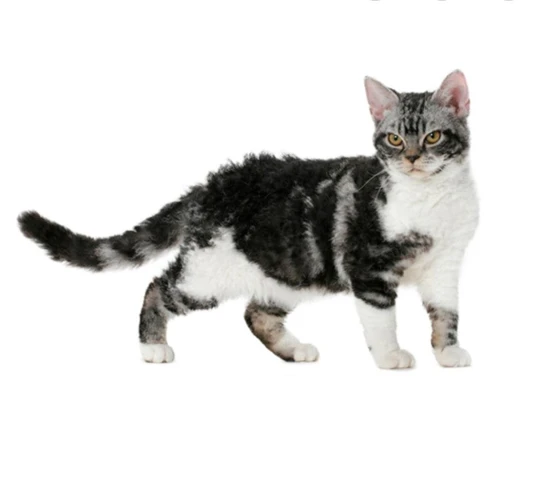
In the world of American Wirehair breeding, there are many different methods that are used to produce high-quality cats with desirable traits. Inbreeding is one of these methods, and it involves the breeding of closely related cats, such as siblings, parents, or grandparents. While this may seem like a strange and even harmful practice to some, inbreeding can actually provide a number of advantages when done correctly. However, there are also some disadvantages that need to be taken into consideration. Let’s take a closer look at the pros and cons of inbreeding in American Wirehair breeding.
To ensure that you have the best possible outcomes in your breeding program, it is important to educate yourself on all aspects of American Wirehair breeding. For more information on genetic testing, breeding partners, health, and more, check out our other articles, such as “Selecting a Compatible Breeding Partner for American Wirehair Cats” and “American Wirehair Breeding: Health and Temperament Considerations.”
Advantages of Inbreeding
Inbreeding is the process of breeding related cats within the same breed. While it may seem counterintuitive, there are several advantages to inbreeding in American Wirehair breeding. These advantages include:
| Advantages of Inbreeding |
|---|
| Stronger Breed Standard |
| Reduction of Undesirable Traits |
| Increased Homozygosity |
Stronger Breed Standard: Inbreeding can help create a more uniform standard for a particular breed. By breeding cats that possess the most ideal traits, the desirable characteristics of American Wirehair cats can be maintained from generation to generation.
Reduction of Undesirable Traits: Inbreeding can reduce the occurrence of undesirable traits such as genetic diseases, defects, and abnormalities. By breeding related cats, there is a higher chance of eliminating certain undesirable traits through the process of genetic selection.
Increased Homozygosity: Homozygosity is when both alleles (copies of genes) are the same. Inbreeding increases the probability of homozygosity, which is desirable in American Wirehair breeding, as it facilitates the development and maintenance of breed-specific traits. It also makes it easier to predict what traits the kittens will inherit from their parents.
While there are advantages to inbreeding, there are also potential disadvantages. It is important for breeders to understand these disadvantages before deciding whether to pursue inbreeding or not.
Disadvantages of Inbreeding
Inbreeding may involve breeding between close relatives, such as siblings, parents and offspring, or even between distant relatives. Although inbreeding can bring some advantages in American Wirehair breeding, it can lead to several severe disadvantages as well. Here are some of the downsides of inbreeding, as represented in a table:
| Disadvantages of Inbreeding |
|---|
| Reduced Genetic Diversity: Inbreeding leads to a smaller gene pool, which means that the offspring will inherit a higher percentage of genes from each parent. This can result in a higher risk of genetic disorders and diseases, as well as a weaker immune system. |
| Higher Incidence of Genetic Disorders: Inbreeding can increase the likelihood of possessing two copies of harmful genes, which can lead to the expression of recessive disorders. These may include various health issues, such as heart disease, respiratory problems, or neurological disorders. |
| Expression of Undesirable Traits: In addition to genetic disorders, inbreeding can also bring out undesirable traits, such as physical deformities, poor temperament, or reduced fertility. |
| Limited Room for Improvement: When breeding with close relatives, there are fewer opportunities to improve a trait or create a new one. Inbreeding can solidify certain traits, but it can also lead to a negative reinforcing feedback cycle that cannot be easily reversed. |
| Inbreeding Depression: Inbreeding may result in a reduced ability to reproduce or a short lifespan. This is known as inbreeding depression, and it occurs due to the expression of deleterious genes that have been fixed in the gene pool of a particular breed. |
It is crucial to understand the potential downsides of inbreeding in American Wirehair breeding. To minimize the risks, breeders should consider genetic testing and selecting suitable breeding partners to maintain genetic diversity. For more information on selecting the right breeding partner or genetic testing, take a look at the following links: (1) and (2).
What is Outbreeding?
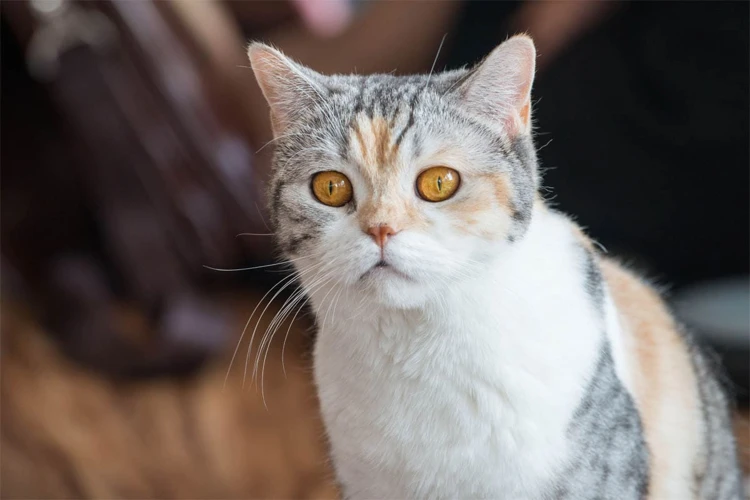
When it comes to American Wirehair breeding, another option that breeders have is outbreeding. Outbreeding is the practice of breeding cats that are not related to each other. This can be done either within the same breed or with cats from a different breed. One advantage of outbreeding is that it can introduce new and desirable traits to the breeding program while also reducing the risk of genetic defects caused by inbreeding. However, outbreeding also has its own set of advantages and disadvantages. Let’s take a closer look. If you want to know more about American Wirehair Breeding traits, you can follow this link to our previous article.
Advantages of Outbreeding
Outbreeding in American Wirehair breeding refers to the process of mating cats from two different bloodlines. It has several advantages that breeders should consider. Here are some of the benefits of outbreeding:
1. Reduces the risk of genetic diseases: One of the major advantages of outbreeding is that it reduces the risk of genetic diseases. When two different bloodlines are bred, it leads to genetic diversity, which reduces the likelihood of inherited diseases. In contrast, when two closely related cats are bred, there is a high probability of passing on genetic diseases to their offspring.
2. Produces healthier kittens: Outbreeding also produces healthier kittens with stronger immune systems. A study found that outbred cats tend to have less inbreeding depression and showed better overall health than inbred cats. This is because outbred cats are less likely to inherit harmful recessive genes that can cause health problems.
3. Increases genetic variation: Outbreeding increases genetic variation, which can lead to a wider range of physical characteristics and coat color patterns in American Wirehair cats. A diverse gene pool also enhances the breed’s resilience to environmental changes, which is crucial in the face of natural selection and adaptation.
4. Improves breed quality: When two different bloodlines are used in breeding, it can lead to the production of more robust and desirable traits in the offspring. This can improve the overall quality of the breed and also prevent the loss of favorable traits in the breeding population.
5. Opens up new opportunities: Outbreeding can also open up new opportunities for breeders who want to create new breeds of American Wirehair cats. By crossing two different breeds, they can produce unique offspring that have specific desirable traits that are otherwise rare in the breed. Creating new breeds can also help to keep the breed’s gene pool diverse and prevent the stagnation of the breeding population.
Outbreeding has several advantages for American Wirehair breeding, including reducing the risk of genetic diseases, producing healthier kittens, increasing genetic variation, improving breed quality, and opening up new opportunities for breeders. To learn more about coat color patterns in American Wirehair breeding, check out this article.
Disadvantages of Outbreeding
Disadvantages of Outbreeding:
- Loss of desired traits: Outbreeding can lead to loss of certain desired traits which were present in the purebred lineage. This is because the genetic diversity introduced through outbreeding may dilute the traits rather than accentuating them.
- Increased genetic defects: Outbreeding can also increase the chances of genetic defects, as the offspring inherit genes from both parents which may not be compatible and may lead to defects in the offspring. This is especially true when the breeding is done between two different breeds or unknown cats.
- Difficulty in finding compatible mates: Outbreeding can make it difficult to find compatible mates for breeding, especially when the gene pool of the breed is limited. This can lead to a reduction in genetic diversity and ultimately, weaker offspring.
- Higher risk of disease: Outbreeding can increase the risk of diseases that are not prevalent in the original breed. This is because the cat may not have developed immunity to the new diseases and can easily contract them when exposed to them.
While outbreeding may have its disadvantages, it can also bring in certain advantages, especially when done carefully and after thorough research. Understanding the common mistakes in American Wirehair breeding and the benefits of crossbreeding American Wirehair cats can help in making informed decisions.
Which One is Better for American Wirehair Breeding?
When it comes to American Wirehair breeding, both inbreeding and outbreeding have their sets of advantages and disadvantages. The decision of which one is better ultimately depends on the breeder’s goals and priorities.
Inbreeding can lead to a more predictable outcome, as certain desired traits are more likely to be expressed when breeding closely related cats. This is known as “fixing” the traits. However, inbreeding can also result in undesirable traits being expressed or amplified, such as genetic disorders or weakened immune systems. It is important for breeders to carefully consider the risks and benefits of inbreeding before proceeding.
Outbreeding, also known as crossbreeding, can introduce new genetic traits and diversify the gene pool. This can be particularly beneficial for American Wirehair breeding, as it can help reduce the likelihood of genetic disorders and increase the overall health of the breed. However, outbreeding can also result in unpredictable traits and may not necessarily lead to the desired outcome.
Ultimately, a combination of inbreeding and outbreeding may be the most effective approach for American Wirehair breeding. By carefully selecting which cats to breed and monitoring their offspring for desirable traits, breeders can build a strong and healthy gene pool while still maintaining the desired physical characteristics and personality traits of the breed.
It is important for breeders to avoid common mistakes in American Wirehair breeding and consult with veterinary professionals to ensure the health and well-being of their cats. For more information on the benefits of crossbreeding American Wirehair cats, check out our article on the benefits of crossbreeding.
Conclusion
After exploring the pros and cons of both inbreeding and outbreeding in American Wirehair breeding, it is clear that there is no clear cut answer as to which method is better. Both methods have their advantages and disadvantages, and ultimately the decision should be based on the individual needs and goals of the breeder.
Inbreeding can result in a higher chance of producing desired traits and reducing genetic diversity, but it also carries with it a higher risk of producing genetic abnormalities and inherited disorders. On the other hand, outbreeding can result in increased genetic diversity, but it can also result in a loss of desired traits and increased difficulty in predicting the offspring.
Regardless of the method chosen, it is important for breeders to carefully monitor the health and wellbeing of their cats and select breeding pairs with care. It is also important to seek advice and guidance from experienced breeders and veterinarians, and to avoid common mistakes in American Wirehair breeding such as inbreeding too closely or breeding cats with known health issues.
Choosing to breed American Wirehairs is a serious responsibility, and should not be taken lightly. By carefully considering the advantages and disadvantages of inbreeding and outbreeding, and taking steps to ensure the health and wellbeing of their cats, breeders can produce healthy, happy cats that maintain the unique characteristics and qualities of this beloved breed.
Frequently Asked Questions
1. What is the difference between inbreeding and linebreeding?
Inbreeding is the breeding of closely related individuals, while linebreeding involves breeding individuals who have a common ancestor in their pedigrees.
2. Can inbreeding lead to genetic abnormalities?
Yes, inbreeding can increase the likelihood of recessive genetic disorders and inherited diseases. This is because closely related individuals are more likely to carry the same recessive genes.
3. Is outbreeding beneficial for overall genetic diversity?
Yes, outbreeding can help increase genetic diversity and reduce the likelihood of genetic disorders. This is because individuals that are less closely related have a greater variety of genes.
4. Can outbreeding lead to a loss of breed standards?
Yes, outbreeding can lead to a loss of breed standards if the individual brought in through outbreeding is not carefully selected for their conformation and other breed-specific traits.
5. What are some of the advantages of inbreeding in American Wirehair breeding?
Inbreeding can help fix desirable traits and reduce genetic variability, making it easier to produce consistent litters of kittens with similar characteristics.
6. What are some of the disadvantages of inbreeding in American Wirehair breeding?
Inbreeding can increase the likelihood of genetic disorders and inherited diseases, reduce fertility, and decrease overall genetic diversity in the breed.
7. What are some of the advantages of outbreeding in American Wirehair breeding?
Outbreeding can introduce new genes and increase genetic diversity, potentially improving overall health and vitality in the breed.
8. What are some of the disadvantages of outbreeding in American Wirehair breeding?
Outbreeding can lead to a loss of breed standards if the individual brought in through outbreeding does not have the desired breed-specific traits.
9. Can inbreeding be avoided altogether in American Wirehair breeding?
It can be difficult to completely avoid inbreeding in a closed breeding population, but careful selection and management can help reduce the likelihood of excessive inbreeding.
10. What factors should be considered when deciding between inbreeding and outbreeding in American Wirehair breeding?
Factors to consider include the desired traits and characteristics, the existing genetic diversity within the breeding population, and the potential risks and benefits of each approach.

